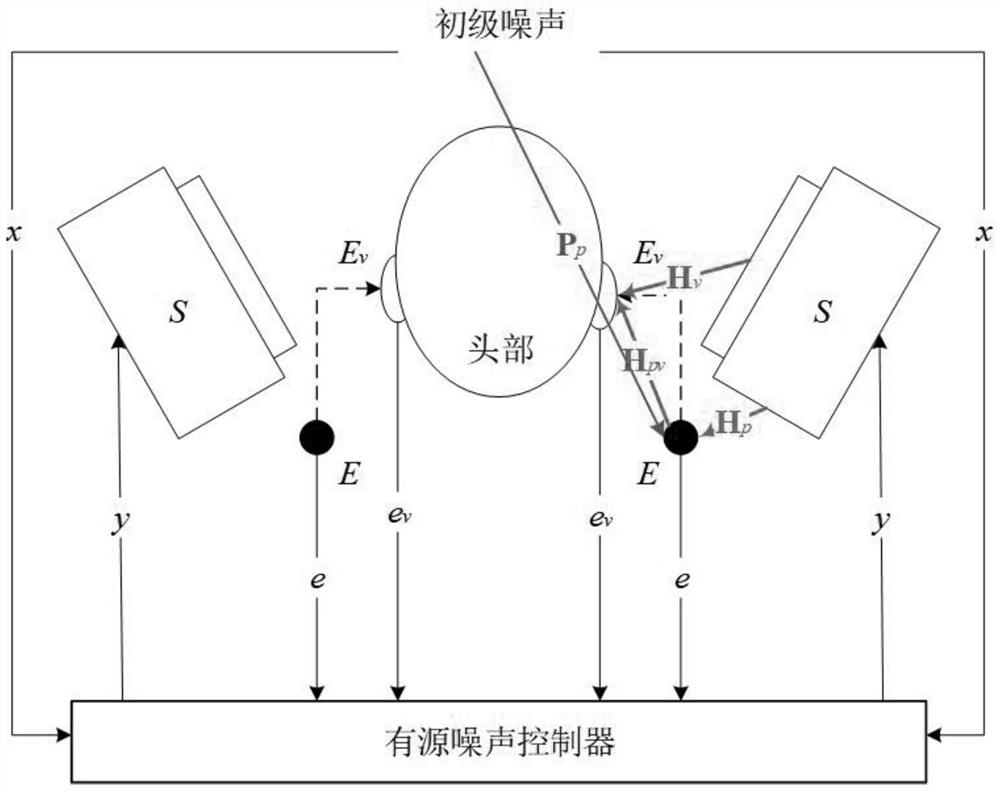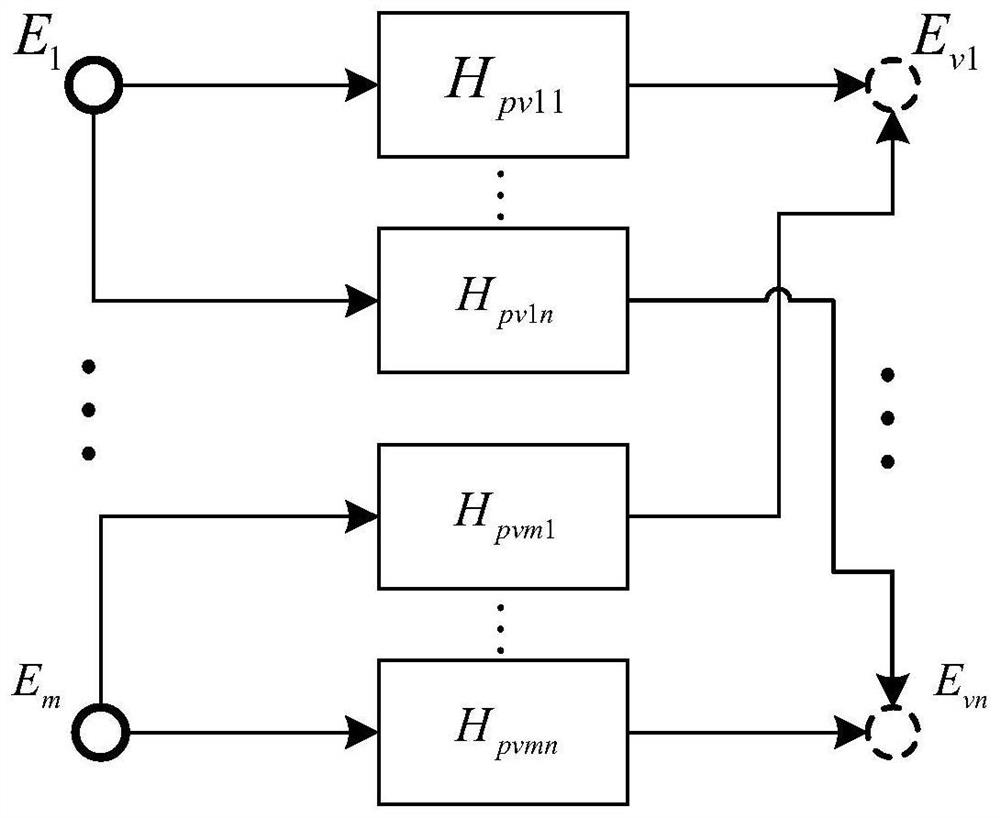Virtual sensing technology-based active noise control system and method for train cab
A technology of active noise control and virtual sensing, applied in active noise control, sound-generating devices, instruments, etc., can solve the problems of limited layout of electro-acoustic devices, influence of normal driver's activities, high noise reduction, etc.
- Summary
- Abstract
- Description
- Claims
- Application Information
AI Technical Summary
Problems solved by technology
Method used
Image
Examples
Embodiment 1
[0089] The main purpose of the active noise control method based on virtual sensing technology is to generate an active quiet zone in the driver's head area without affecting the normal activities of the driver, that is, the quiet zone of the active noise control system is changed from the position of the error microphone Move to the driver's ear position. This technology is an active noise control system designed based on the principle of forming an active silent zone in local active noise control. It can also be used when it is inconvenient or impossible to place an error microphone close to the human ear. An effective silent zone is formed near the human ear, and the control system can still maintain good stability and noise reduction performance when the human head moves or the noise environment changes. In this system, the restriction on the installation position of the error microphone is obviously reduced, so the research on this system has high practical value and very...
Embodiment 2
[0097] Such as Image 6 As shown, the actual application of the system is divided into the following two steps:
[0098] 1. Modeling and debugging stage
[0099] For this system, the physical primary path P p It is only used for system principle illustration, not for actual modeling. Physical secondary pathway H p , virtual secondary path H vand the physical virtual channel H pv Both require actual modeling to obtain their estimated values with Pathway modeling is divided into the following two steps:
[0100] a. Secondary pathway modeling
[0101] Secondary pathway modeling includes physical secondary pathways and virtual secondary pathways. The modeling method is that the secondary sound source plays the "preset sound source" in sequence, the microphones at the physical error point and the virtual error point receive the signal at the same time, and complete the transmission from the secondary sound source to the physical error point and the virtual error point th...
PUM
 Login to View More
Login to View More Abstract
Description
Claims
Application Information
 Login to View More
Login to View More - Generate Ideas
- Intellectual Property
- Life Sciences
- Materials
- Tech Scout
- Unparalleled Data Quality
- Higher Quality Content
- 60% Fewer Hallucinations
Browse by: Latest US Patents, China's latest patents, Technical Efficacy Thesaurus, Application Domain, Technology Topic, Popular Technical Reports.
© 2025 PatSnap. All rights reserved.Legal|Privacy policy|Modern Slavery Act Transparency Statement|Sitemap|About US| Contact US: help@patsnap.com



